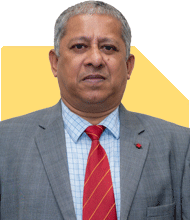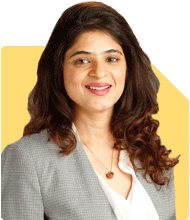Omkeshwar Singh | Answer |Ask -Follow
Head, Rank MF - Answered on Sep 02, 2022

I am 30 years young, have a 3-year-old young kid and a wife who is 30 years young.
Planning for an investment period of 15-25 years; Gradually from 15 years I'll start using my MF.
Are these MFs good? I know I've opted for many. Any suggestions?
1. PGIM India MidCap Opportunities (G) Rs 1,000
2. ICICI Pru Nifty Next 50 Index Rs 1,000
3. Nippon India Value Rs 1,500
4. Parag Parikh Tax Saver Rs 1,000
5. HDFC Balance Advantage IDCW Payout Rs 1,000
6. Edelweiss Govt Securities Rs 1,000
7. Edelweiss Banking and PSU Debt Rs 2,000
8. IDFC Govt Securities Rs 2,000
9. Quant Small Cap Rs 1,000
10. Axis Bluechip Rs 1,000
11. Aditya Birla Sunlife Pharma and Healthcare Rs 1,000
12. HDFC Developed World Indexes FoF Rs 1,000
13. ICICI Pru Nasdaq 100 Index Rs 500
14. Tata Resources and Energy Rs 1,000
15. Edelweiss Recently Listed IPO Rs 1,500
16. Edelweiss US Technology Equity FoF Rs 1,000
17. Tata Digital India Rs 1,000
18. Franklin Feeder Franklin US Opportunities Rs 1,000
19. PGIM India Global Equity Opportunities Rs1,000
Total SIP: Rs 21,500
You may like to see similar questions and answers below
Omkeshwar Singh | Answer |Ask -Follow
Head, Rank MF - Answered on Feb 16, 2022
Ramalingam Kalirajan |8459 Answers |Ask -Follow
Mutual Funds, Financial Planning Expert - Answered on Apr 30, 2024
Ramalingam Kalirajan |8459 Answers |Ask -Follow
Mutual Funds, Financial Planning Expert - Answered on Apr 18, 2024
Ramalingam Kalirajan |8459 Answers |Ask -Follow
Mutual Funds, Financial Planning Expert - Answered on Sep 30, 2024
Dr Nagarajan J S K |406 Answers |Ask -Follow
NEET, Medical, Pharmacy Careers - Answered on May 16, 2025

Based on my understanding, no one usually requests a birth certificate at this age. Your inquiry relates to the period before and after independence. In those days, they would accept the SSLC book if you didn't have a birth certificate. However, I am not sure if that was the case during your time.
Instead, you can present your Aadhaar card, which likely includes your original date of birth. You can utilize that information.
If my response doesn't fully address your concerns, I recommend consulting a Notary Public for further assistance.
BEST WISHES.
THANK YOU SIR.
with regards
Prof Suvasish Mukhopadhyay |651 Answers |Ask -Follow
Career Counsellor - Answered on May 16, 2025
Prof Suvasish Mukhopadhyay |651 Answers |Ask -Follow
Career Counsellor - Answered on May 16, 2025
Radheshyam Zanwar |1634 Answers |Ask -Follow
MHT-CET, IIT-JEE, NEET-UG Expert - Answered on May 16, 2025
Radheshyam Zanwar |1634 Answers |Ask -Follow
MHT-CET, IIT-JEE, NEET-UG Expert - Answered on May 16, 2025
Ashwini Dasgupta |107 Answers |Ask -Follow
Personality Development Expert, Career Coach - Answered on May 16, 2025
Ramalingam Kalirajan |8459 Answers |Ask -Follow
Mutual Funds, Financial Planning Expert - Answered on May 16, 2025
Ramalingam Kalirajan |8459 Answers |Ask -Follow
Mutual Funds, Financial Planning Expert - Answered on May 16, 2025
Milind Vadjikar |1236 Answers |Ask -Follow
Insurance, Stocks, MF, PF Expert - Answered on May 16, 2025
Milind Vadjikar |1236 Answers |Ask -Follow
Insurance, Stocks, MF, PF Expert - Answered on May 16, 2025


























